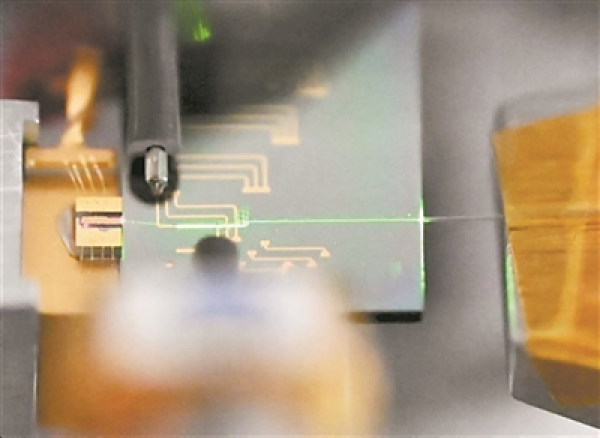A high performance ultrafast laser the size of a fingertip
According to a new cover article published in the journal Science, researchers at the City University of New York have demonstrated a new way to create high-performance ultrafast lasers on nanophotonics. This miniaturized mode-locked laser emits a series of ultra-short coherent pulses of light at femtosecond intervals (trillionths of a second).
 Ultrafast mode-locked lasers
Ultrafast mode-locked lasers can help unlock the secrets of nature''s fastest timescales, such as the formation or breaking of molecular bonds during chemical reactions, or the propagation of light in turbulent media. The high speed, peak pulse intensity, and broad spectrum coverage of mode-locked lasers also enable many photon technologies, including optical atomic clocks, biological imaging, and computers that use light to calculate and process data.
But the most advanced mode-locked lasers are still extremely expensive, power-demanding desktop systems that are limited to laboratory use. The goal of the new research is to turn this into a chip-sized system that can be mass-produced and deployed in the field. The researchers used a thin-film lithium niobate (TFLN) emerging material platform to effectively shape and precisely control laser pulses by applying external radio frequency electrical signals to it. The team combined the high laser gain of class III-V semiconductors with the efficient pulse shaping capabilities of TFLN nanoscale photonic waveguides to develop a laser emitting a high output peak power of 0.5 watts.
In addition to its compact size, which is the size of a fingertip, the newly demonstrated mode-locked laser also exhibits a number of properties that traditional lasers cannot achieve, such as the ability to precisely tune the repetition rate of the output pulse over a wide range of 200 megahertz just by adjusting the pump current. The team hopes to achieve a chip-scale, frequency-stable comb source through the laser''s powerful reconfiguration, which is critical for precision sensing. Practical applications include the use of mobile phones to diagnose eye diseases, or to analyze E. coli and dangerous viruses in food and the environment, and to enable navigation when GPS is damaged or unavailable.


